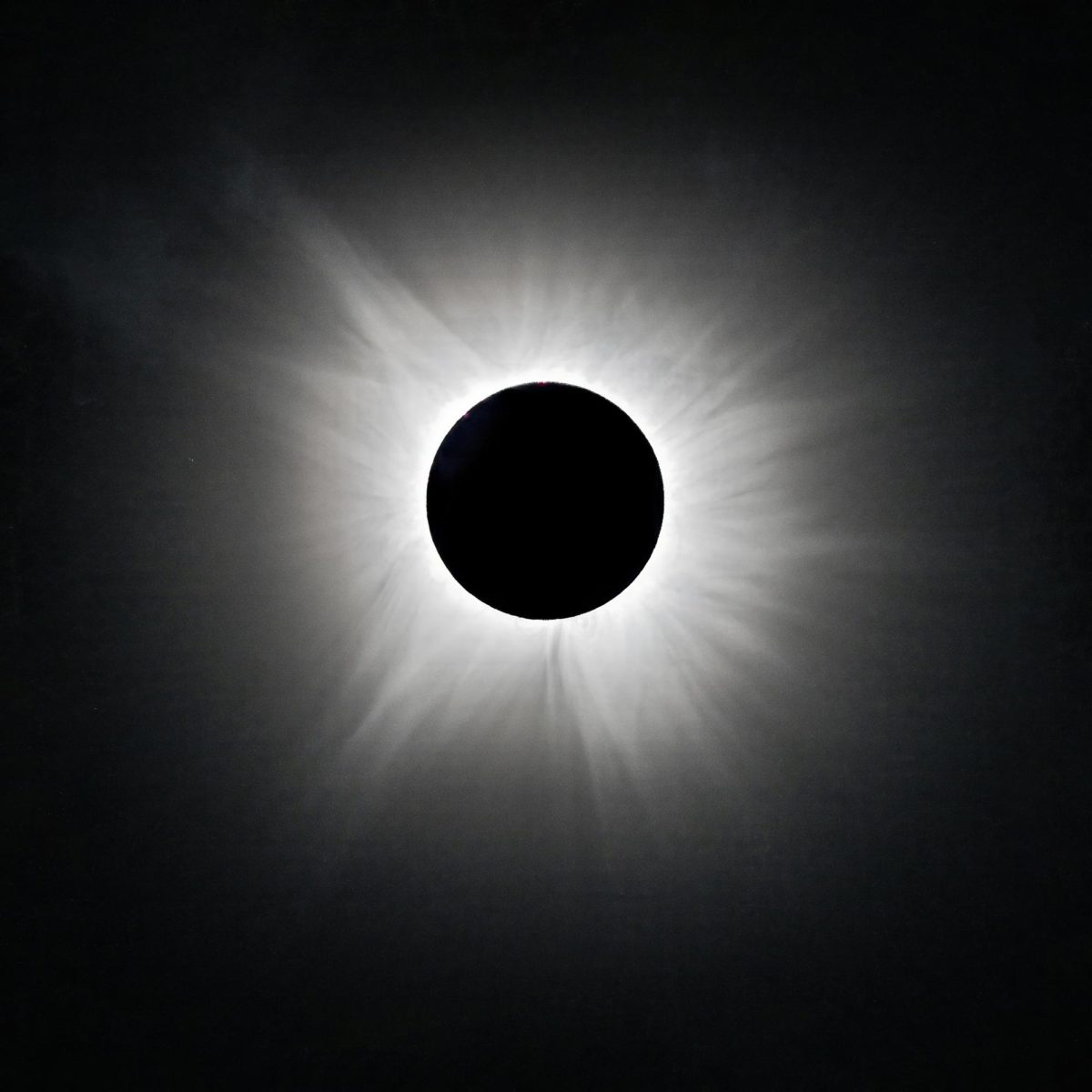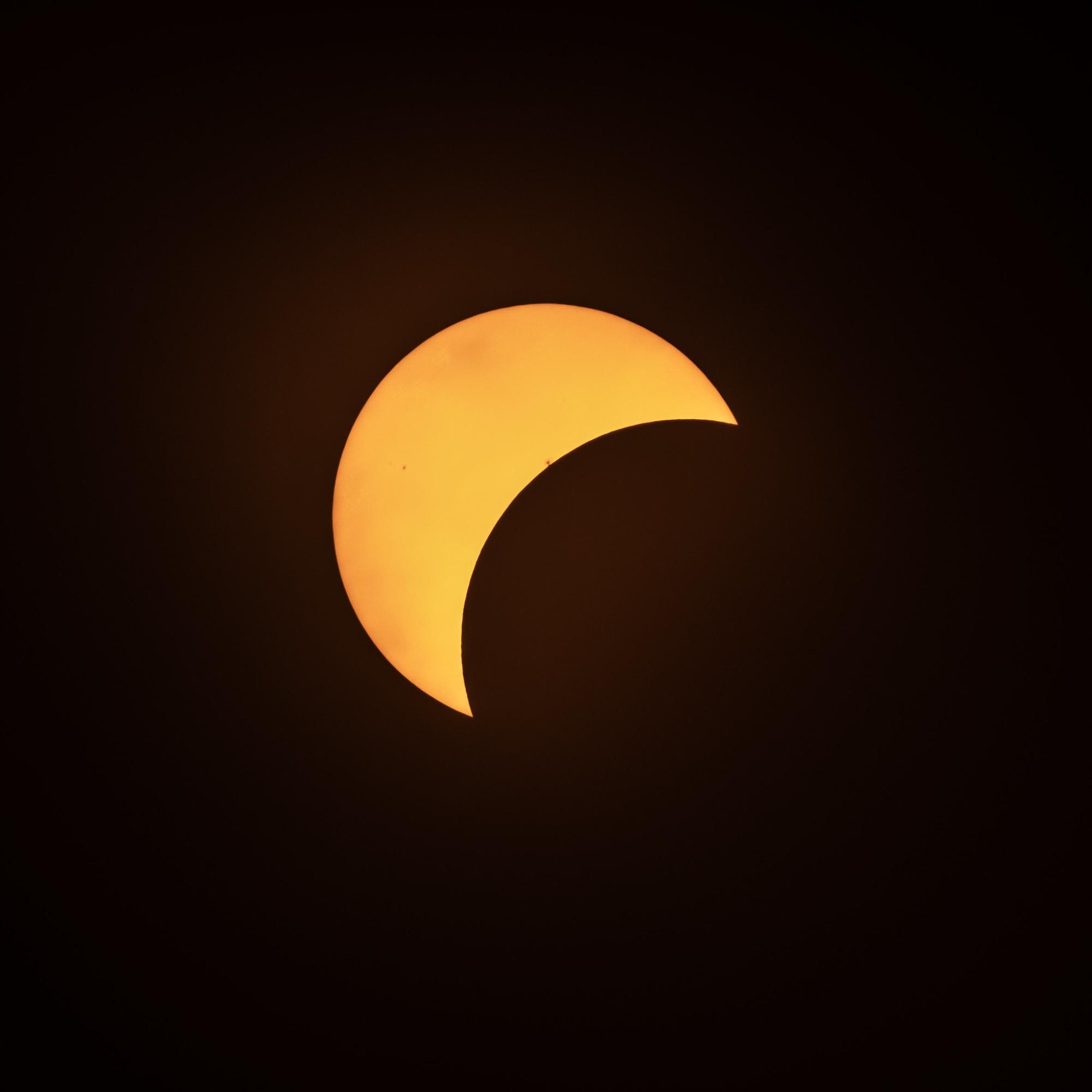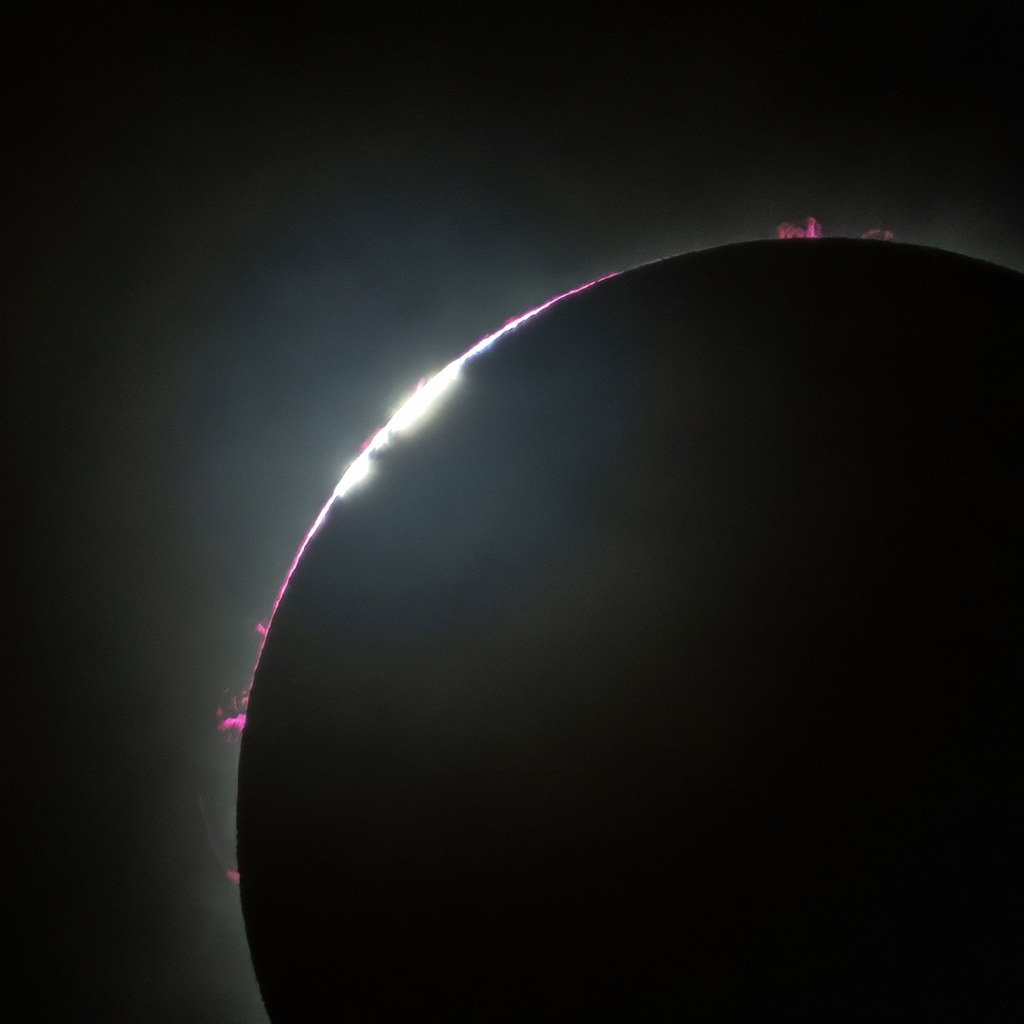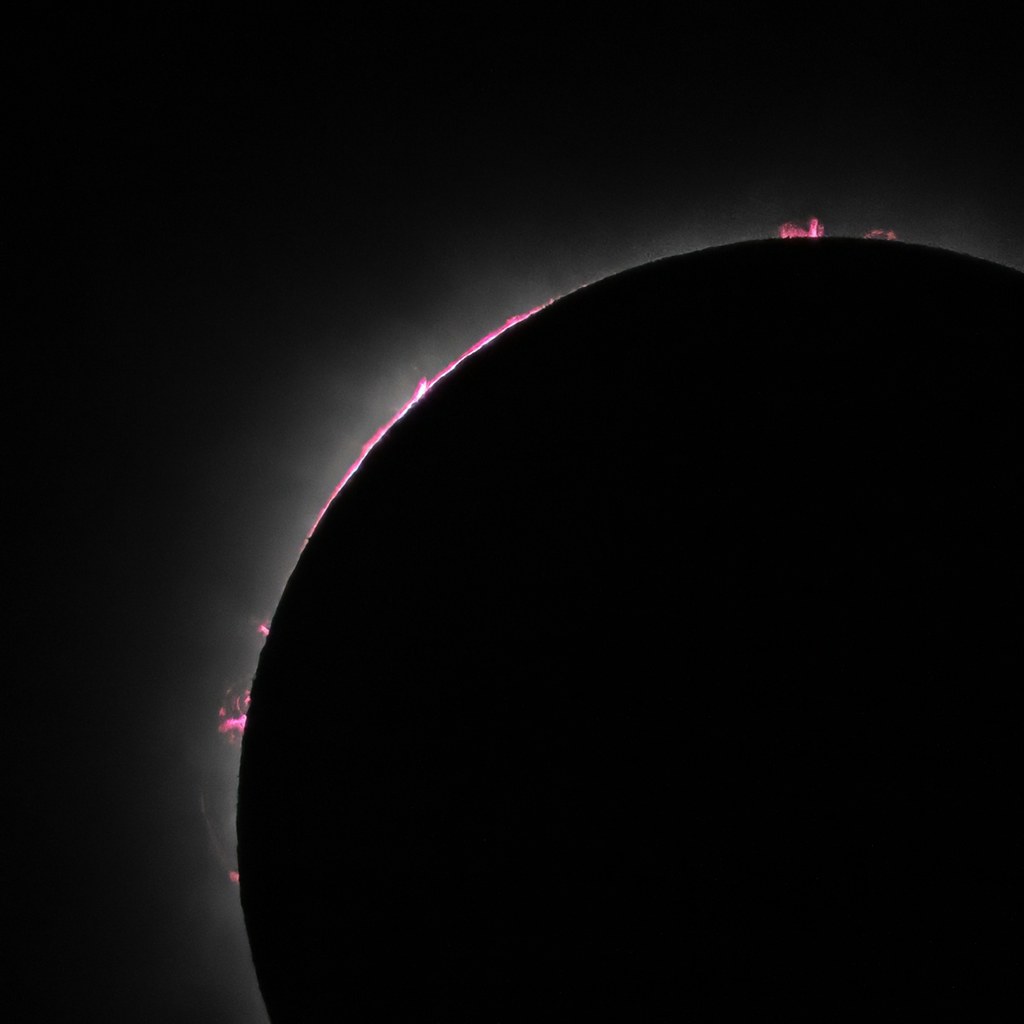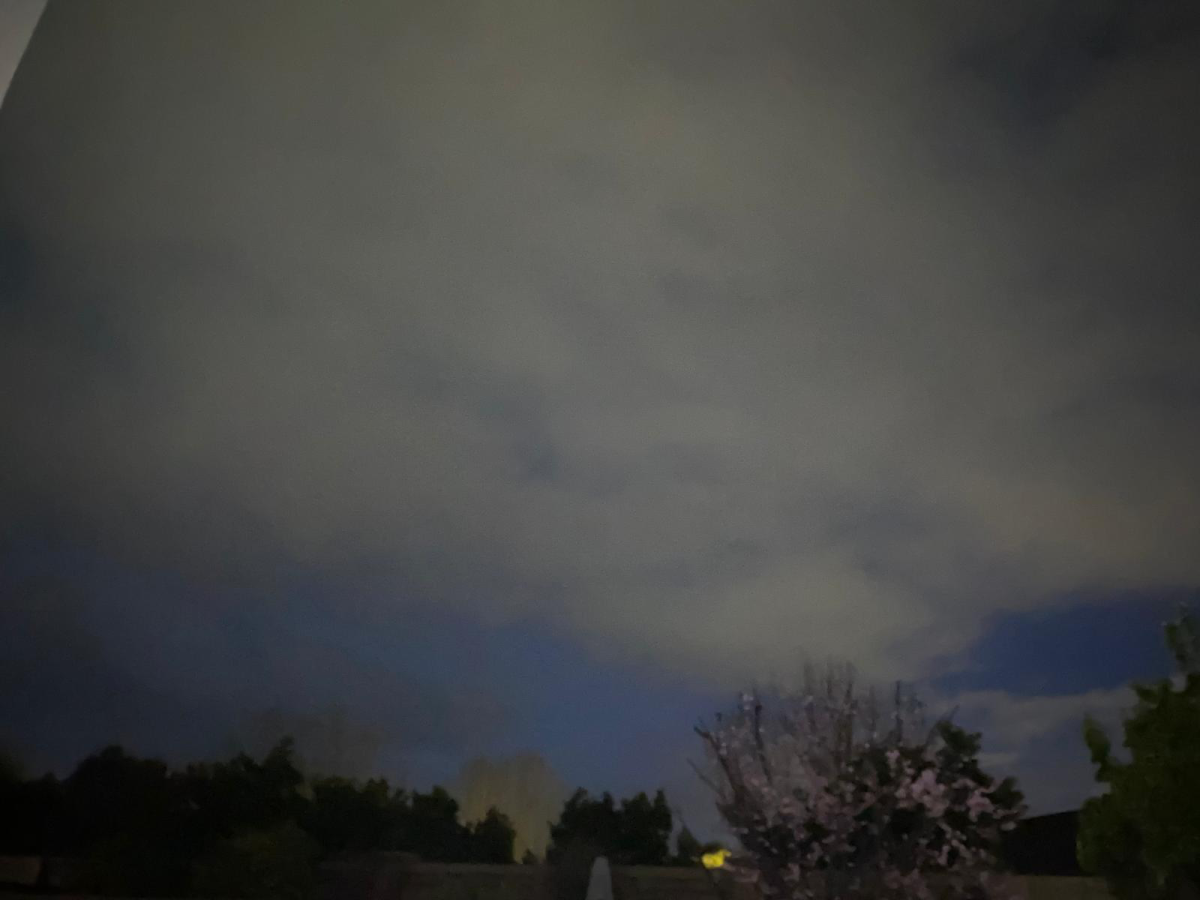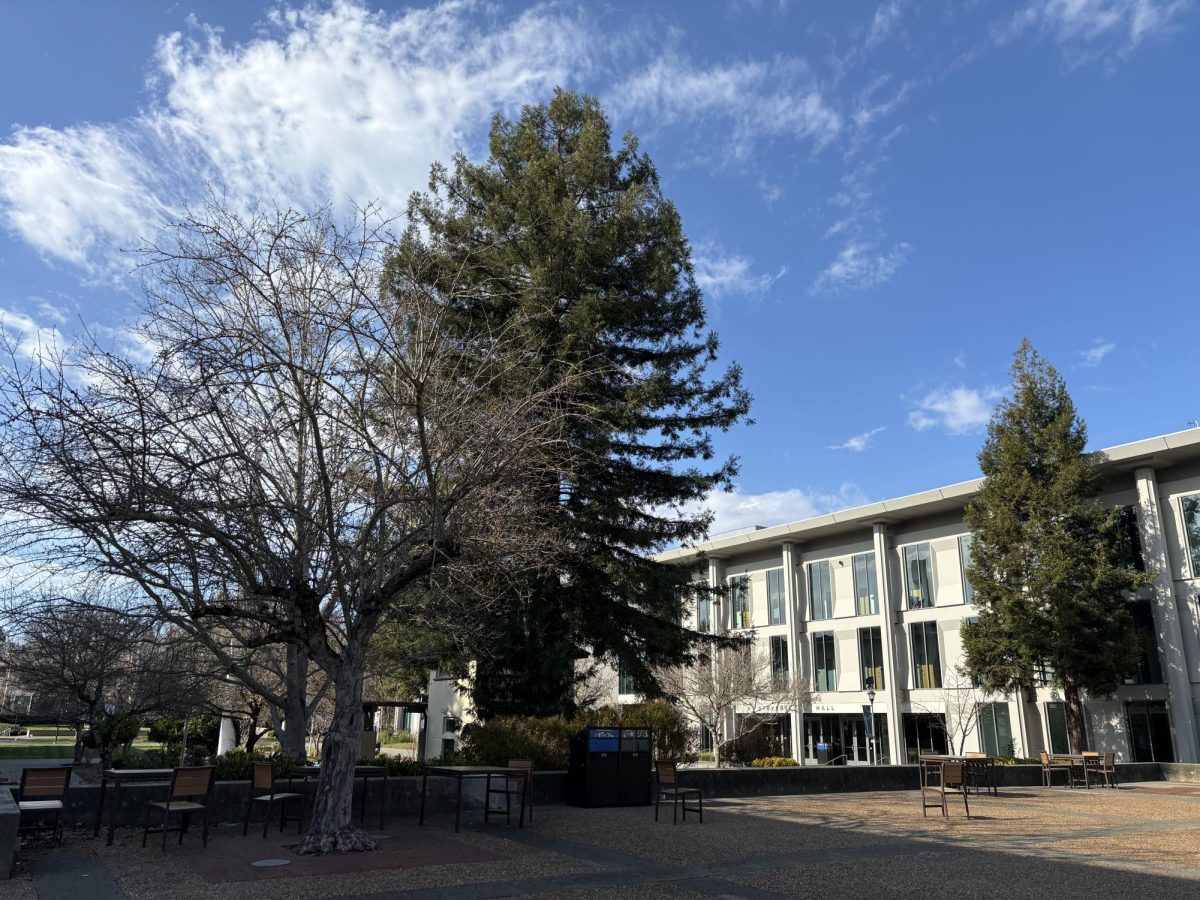On April 8, 2024, eyes across America were drawn skyward as a total eclipse passed overhead. This is the last total eclipse in the US for 20 years, with the next that may be seen in 2044. Let’s dive into the intricate process of capturing the 2024 eclipse, through the lens of professional photographer Baba Arimilli.
“I always cared about space and astronomy growing up, and I married that with the photography I learned later in my life. That’s kind of where I am now,” said Armilli.
One of the first challenges photographers encounter is the intensity of light the sun emits. It’s dangerous even to just look at the sun, let alone point a camera with a powerful magnifier at it.
“The sun is so bright that besides hurting your eyes, it also burns the sensor in the camera. I’m doing a high zoom focal length. So it’s like putting a magnifying glass on a piece of paper, you know, it burns in seconds,” said Armilli.
To compensate for the sun’s light, photographers use powerful solar filters to protect their lenses. The result is partial eclipse photos that look like this.
At the center of the eclipse path, where Arimilli set up, the eclipse lasts for a little less than three hours. But totality, when the moon covers the sun, and the sky turns dark, lasts only 3 or 4 minutes.
“The key is that we have to take the solar filter off here. And from here on, during totality, everything goes crazy. In that 30 seconds before totality, you’ve got to change all the camera settings,” said Armilli.
Several important astronomical phenomena are visible right before totality. The most famous, called the “diamond ring,” occurs right before the last rays of light are obscured by the moon, resulting in a brilliant spot of light at the edge of the eclipse. Another is Baily’s Beads, where light streaming through the valleys and craters on the moon are illuminated as little edges.
“Baily is an Englishman who discovered that the moon has peaks and valleys and mountains just like the Earth. At the last minute, a little bit of sunlight will be broken up what looks like beads,” said Armilli.
Another, more recent discovery is the presence of solar prominences. These are huge arcs of plasma above the sun’s surface that cannot be photographed except during an eclipse.
“These are roughly about five times the diameter of the Earth. It gives you an idea of how big these are,” said Armilli.
At the moment of the eclipse, the sun as we know it is completely obscured. The only visible part is the solar corona, the outermost layer of the sun’s atmosphere. The corona becomes exponentially less bright the further away from the sun it is, which poses a challenge to photographers.
“The corona extends outwards up to nine radiuses of the sun. If you want to capture the edges, you have to overexpose and so forth – then you get the edges, but everything in the middle will be blown out. It’s just too bright,” said Armilli.
To compensate for this lighting inconsistency, photographers use a method called bracketing, which involves rapidly changing the exposure in each camera capture. It’s used for photos with a very specific exposure level. In this case, Armilli uses bracketing to capture the different features of the solar corona.
“I set the interval timer at one second and shot five shots per second at five different exposures to capture the different range of things,” said Armilli.
Another challenge was camera stabilization. For astrophotography, exposure times are often long enough that the Earth’s rotation will move the object out of focus. As a result, photographers rotate the camera with the Earth using a tracker, which is aligned with the North Star. For an object as bright as an eclipse, exposure times are far shorter, but still not negligible.
“The hard part here is, during an eclipse, there is no North Star I can line up with. I used the compass app and an azimuth and declination app to get it close enough to where the North Star is. I wouldn’t be able to do like 30-second exposure or a two-minute exposure I could do at night with a nebula; but for one of up to three or four seconds, I could probably get away with it,” said Armilli.
Armilli’s work was featured in the Austin Astronomical Society’s front page, with his photograph of the “Diamond Ring” front and center. His meticulous technical precision not only captured the spectacle of eclipses, but also the unique astronomical phenomena of them.

